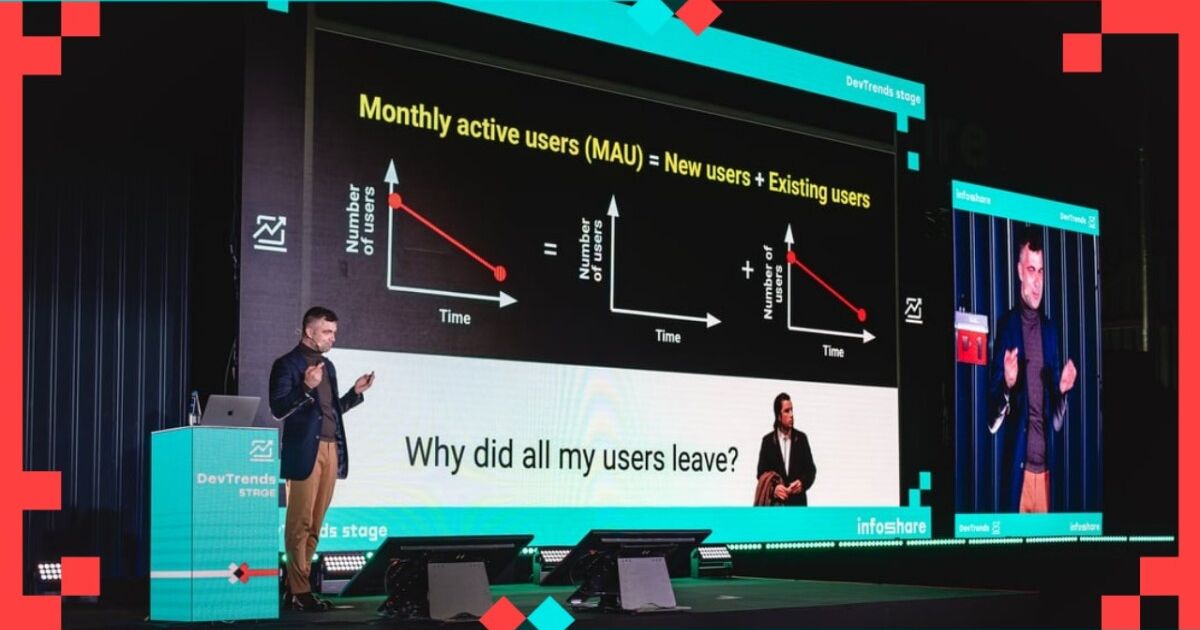VIEW SPEECH SUMMARY
- Using metrics in isolation risks misleading conclusions about product health.
- Not telling stories when presenting data leads to loss of context.
- Trying to impress stakeholders can cause dishonest or skewed reporting.
- Using the wrong language causes miscommunication and misalignment with business goals.
- Not using visuals weakens communication effectiveness.
Actionable Insights:
- Use a holistic set of metrics grounded in product-specific frameworks rather than isolated metrics.
- Common frameworks include:
- HEART (focuses on happiness, engagement, adoption, retention, task success; suited for B2C).
- AARRR or pirate metrics (used primarily to measure growth and acquisition; works for B2C and B2B).
- CASTLE (for strategic maturity in B2B products; focuses on cognitive load, satisfaction, error rate).
- Choose frameworks based on product nature and current challenges.
- Define clear goals (what users should do) and signals (user behavior changes showing progress toward goals).
- Map goals and signals to measurable metrics for better tracking.
- Triangulate multiple metrics to see their interrelationship and avoid optimizing one metric at the expense of others.
- Combine UX metrics with business KPIs to find a "sweet spot" aligning product and business goals.
- Tell data stories with context rather than just presenting raw numbers.
- Focus on outcomes (real business impact) rather than just outputs (isolated metrics or changes).
- Use elevator pitches to succinctly communicate key messages to high-level executives.
- Avoid manipulating data to impress management; honesty safeguards long-term success.
- Use visualizations (charts, before/after comparisons) to make data more accessible and actionable.
- Develop clear dashboards with relevant visuals tied to business goals to facilitate quick understanding and decision-making.
Additional Notes:
- Examples cited include pitfalls experienced by Nokia and Microsoft due to poor understanding and overconfidence.
- Emphasized that metrics show “what” is happening but not “why”—user feedback and interviews are needed to understand causes.
Summary of Actionable Tasks:
- Select appropriate metric frameworks based on product type and company goals.
- Define goals and behavioral signals for your product; link them to actionable metrics.
- Implement holistic, triangulated measurement rather than isolated numbers.
- Prepare data storytelling frameworks to add context in presentations.
- Align product language with business language to avoid miscommunication.
- Create and maintain visually rich dashboards tailored to business KPIs.
- Practice honesty and transparency in reporting product design impact.
- Use elevator speech techniques for executive communication.
Measure & Communicate Product Design Impact
13:35 - 14:05, 28th of May (Wednesday) 2025 / DEV TRENDS STAGE
Product design is much more than just creating pixel-perfect mockups. Design is all about creating value for both users and businesses. For product designers to grow professionally, we must be aware of how we impact business. As you provide more business impact, you will likely receive more opportunities for growth.
But the truth is—measuring design and communicating design insights is never easy. Not only do you need to know what to measure and how to measure it, but you must also speak business language when talking to stakeholders. You likely face a lot of pushback from management if you present your insights incorrectly.
This session will cover the following topics related to measuring & communicating design impact:
✅ Overview of UX metrics and practical recommendations on how to choose the right metrics
✅ Introduction to business vocabulary when talking about design (be able to speak business language when communicating design insights)
✅ Practical recommendations on how to simplify numbers to accommodate for a wide range of stakeholders and how to overcome common challenges when communicating your ideas to stakeholders.



